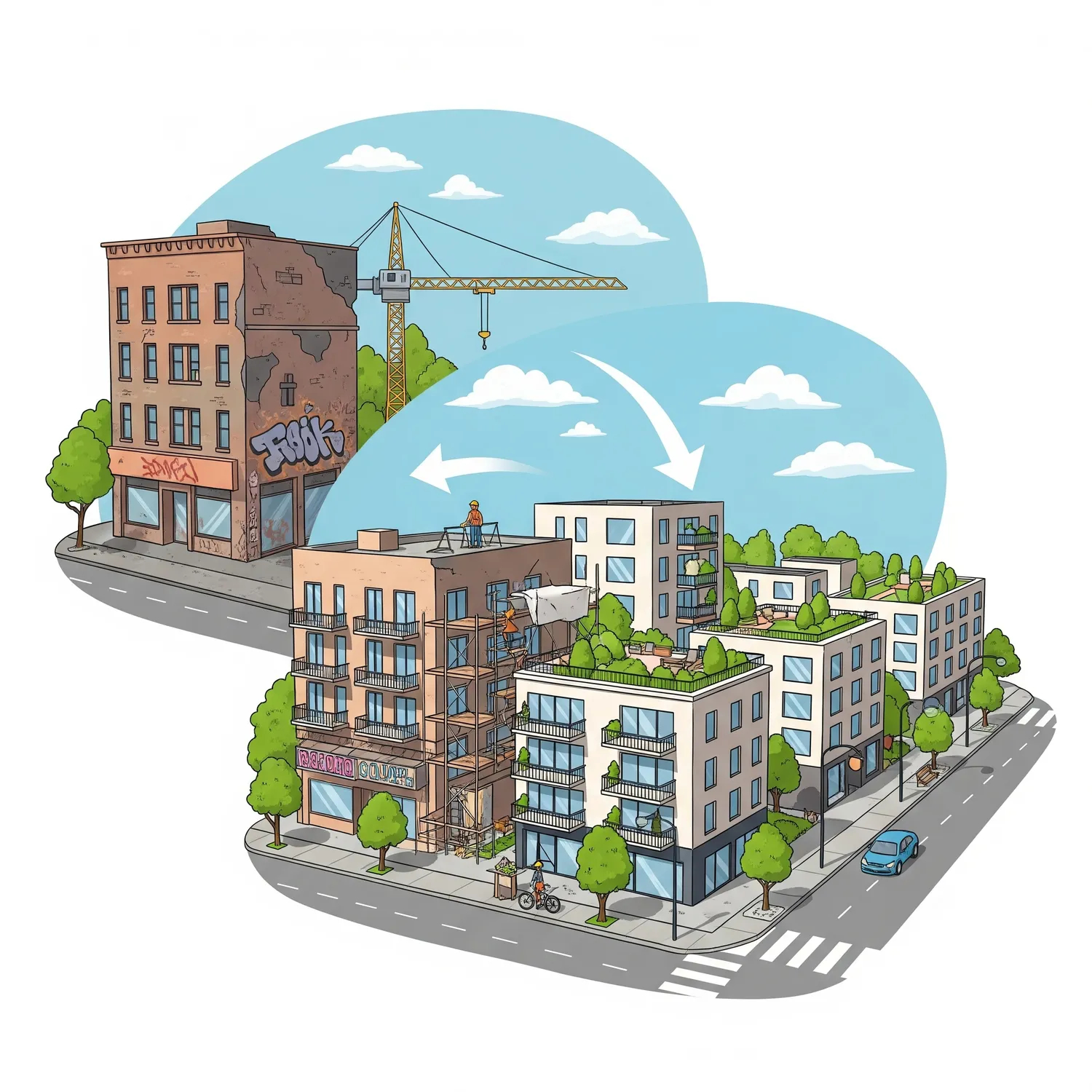

The conversion of a commercial premise into a residential unit is a growing trend in many cities, driven by the need to optimize urban space and meet housing demand. This process, while beneficial for the regeneration of neighborhoods and the revitalization of degraded areas, involves a series of administrative and technical procedures that are essential to understand.
Key Phases of the Process:
- Urban Planning Viability:
- Prior Consultation with the City Council: This is the first and most crucial step. It must be verified that the General Urban Planning Plan (PGOU) or the municipal urban planning regulations allow the change of use in the area and for the specific premise. Some premises may have limitations due to height, minimum area, ventilation, lighting, or even being in areas with exclusive commercial use.
- Viability Report: Based on the consultation, a qualified architect or technician can prepare a report evaluating the technical and legal feasibility of the project, identifying potential obstacles and requirements.
- Technical Project:
- Project Commissioning: Once viability is confirmed, an architect is commissioned to draft the Change of Use Project. This document will detail the layout of the future home, installations (electricity, plumbing, sanitation, ventilation), compliance with habitability regulations, accessibility, and energy efficiency.
- Professional Association Endorsement: The project must be endorsed by the Official College of Architects (or corresponding professional association) to ensure its technical correctness and compliance with current regulations.
- Licenses and Permits:
- Urban Planning License (or Building Permit): The endorsed project is submitted to the City Council to request the building permit. This license authorizes the necessary works for the transformation of the premise into a residential unit. Processing time can vary considerably depending on the municipality.
- First Occupation License or Certificate of Occupancy: Once the works are completed and the relevant inspections by municipal technicians have been carried out, the First Occupation License (in some autonomous communities, Certificate of Occupancy) is requested. This document certifies that the dwelling meets the minimum conditions of habitability and safety and is suitable for habitation.
- Property Registry:
- Public Deed of Change of Use: With the First Occupation License in hand, one must go to a notary to grant the public deed of change of use. This document legally formalizes the new nature of the property from commercial premise to residential unit.
- Registration in the Property Registry: Finally, the public deed is presented to the Property Registry so that the change of use is duly registered. This is a crucial step for the legal security of the property and its future sale.
- Other Relevant Procedures:
- Cadastral Update: Inform the Cadastre of the change of use so that the cadastral value of the property is updated and the Real Estate Tax (IBI) is adjusted to its new typology.
- Utilities: Contracting or changing ownership of utilities (water, electricity, gas) with residential rates.
- Homeowners' Association: It is essential to check the community statutes. In some cases, the community's approval for the change of use may be necessary, especially if it affects common elements or if the statutes explicitly require it. Ignoring this step can lead to future conflicts.
Important Considerations:
- Costs: The process involves various costs: architect's fees, municipal taxes (licenses), taxes, notary and registration costs, and the cost of adaptation works.
- Time: The total duration of the process can be considerable, from several months to more than a year, depending on the project's complexity and the processing times of each administration.
- Regulations: Urban planning and habitability regulations vary between municipalities and autonomous communities, so it is vital to have professional advice from the beginning.
In summary, the change of use from commercial premises to residential unit is an operation that requires meticulous planning and rigorous adherence to regulations. Having the advice of qualified professionals (architects, lawyers) is key to ensuring the success of the project and avoiding setbacks. These types of projects not only offer new housing opportunities but also actively contribute to the vitality and sustainability of our cities.